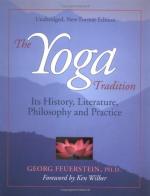|
This section contains 6,941 words (approx. 24 pages at 300 words per page) |

|
SOURCE: “Robert Frost and the Renewal of Birds,” in Reading in an Age of Theory, edited by Bridget Gellbert Lyons, Rutgers University Press, 1997, pp. 131-45.
In the following essay, Hollander discusses Robert Frost's place in “poetic ornithology.”
Mythologizing a construction of nature's—an animal, plant, geological formation, moment of process—could be seen both as a desecration and a celebration of pragmatically considered fact. When this goes on in poetry—what Frost called “the renewal of words for ever and ever”—it is accompanied and invigorated by a reciprocal mythologizing, as it were, of the very words used in the poetic process.1 Literature is full of purely mythological, mostly composite, creatures—phoenix, unicorn, basilisk, chimera, hydra, centaur—as nature is even more full of creatures totally innocent of interpretation—woodchuck, anteater, turbot, Shetland pony, jellyfish, quail.
But then there are the fallen creatures—lion, eagle, ant, grasshopper, barracuda...
|
This section contains 6,941 words (approx. 24 pages at 300 words per page) |

|


